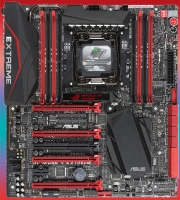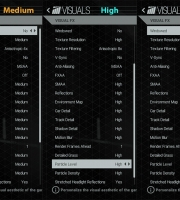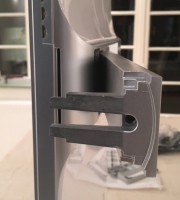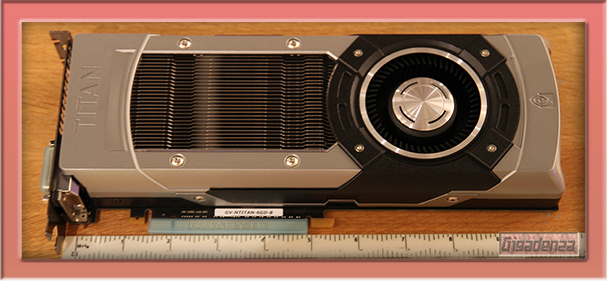


The 590 retained the advantages of a wider memory bus and higher tally of Render Processors, while the 6990’s additional memory, texture units and superior floating point performance ensured an inevitable outcome…two monolithic frame rate virtuosos harvesting equal plaudits for benchmarks with a similar thirst for fuel, though as summer drew near in 2012, both had already reached the ripe old age of 1 and Nvidia, brimming with confidence in the wake of its recent singles victory, was about to try and unify the titles. Excuse me? What about the pixel rate, GFlops again?? Have you forgotten the tables already?? Everything I didn’t mention is right there….honestly.
In May, we were introduced to the GTX 680’s twin headed brother, the GTX 690, whose pair of “Keplers”, owing to the new GPU’s supreme efficiency, were allowed to operate at virtually their original speed as well as benefit from the same “boost clock” feature.
Though the card’s exorbitant launch price was hard even for Nvidia’s fans to justify, two big green feet were now planted firmly in the 28nm era and if raw performance was all that mattered to their owner, he could rest easy….that is until June, when the term “pulling a fast one” could have scarcely been more apt to describe Giant Red Beard’s next attack on the singles front. Enter the HD 7970 “Ghz edition”, a supercharged version of its predecessor, same GPU, same quota of memory, same everything in fact, just a little faster.
DDR5 now zipped along at 6ghz, matching the 680s while core speed was cranked upto to 1ghz, with AMD implementing a somewhat cruder form of Nvidia’s “boost clock” by providing users with a fixed 50mhz bonus as permitted by the card’s power limit. Unoriginal, perhaps and any chance of praise from conservationists had, for now, been conceded to pastures green. Nevertheless, in the world of refresh rates, timedemos and bar charts, the move was enough for AMD to once again edge ahead.
One crown a piece, AMD, the singles champion by a hare’s breadth with both it and the 680 burning similarly sized holes in purchasers pockets. Nvidia, current leader in doubles but with a worfully pricey solution and AMD yet to offer a 28nm alternative.
In February 2013, following over six months of radio silence, it was Nvidia’s turn to be a little lazy and also the turn of the tortured sole that is the author of this article, after all, there are only so many flowery similes and metaphors one can employ to convey the capacity and fortitude of pieces of silicon. Let hard facts be my forte for the next few chapters.
In turning its attention to reclaiming singles dominance, the chip which Nvidia elected to exploit next was the GK110, which had made its début in the professional market four months earlier. The design was barely distinguishable from that of GK104, in essence because it was the same “Kepler” GPU but with six additional Streaming Multiprocessors, each playing host to 64 double precision cores (useful for complicated research and rendering etc), to this was married a staggering 6GB portion of DDR5, three times as was allotted to the GTX 680, while the bus on which it travelled expanded from 256 to 384bits. A more sophisticated form of “boost clock” was established, this time based on maximum temperature as well as power limits. Core speed was a little slower, ostensibly to improve yield rates in light of the extra streaming processors, though memory frequency matched that of the 680…all this within the confines of 250 watts.

Gigabyte’s interpretation of the GTX Titan card (another reference design!)
For a modest £830, the keen enthusiast could acquire what Nvidia had christened the “GTX Titan”. Many claimed that this was an experiment by green team to see how many rich “consumers” could be tempted by the exclusivity of a “professional” product, whilst AMD’s fans were quick to point out that though the Titan convincingly displaced 7970 “GHz edition” at the top of the singles tree, a pair of 7970’s could be purchased for virtually the same price and generate superior performance in crossfire.
Such arguments might well have influenced AMDs response. Their monumental HD 7990 officially emerged in April and presented us with two fully unlocked Thaiti’s screeching along at up to 1ghz, each sharing a Titan equalling 6GB of RAM. Price was the same as the Titan, though more importantly, it also reflected that of the dual GPU card against which it was directly competing, Nvidia’s now year old GTX 690.